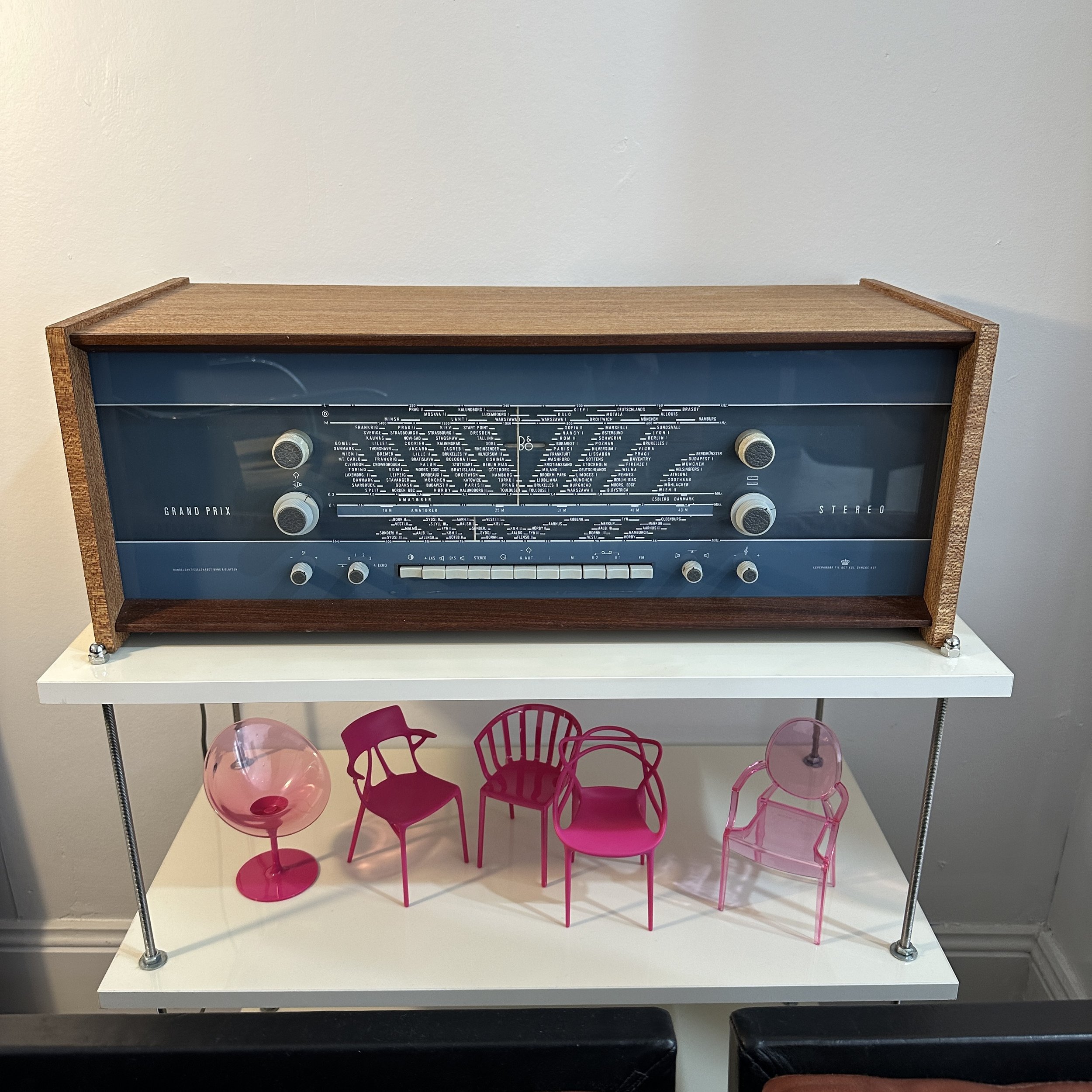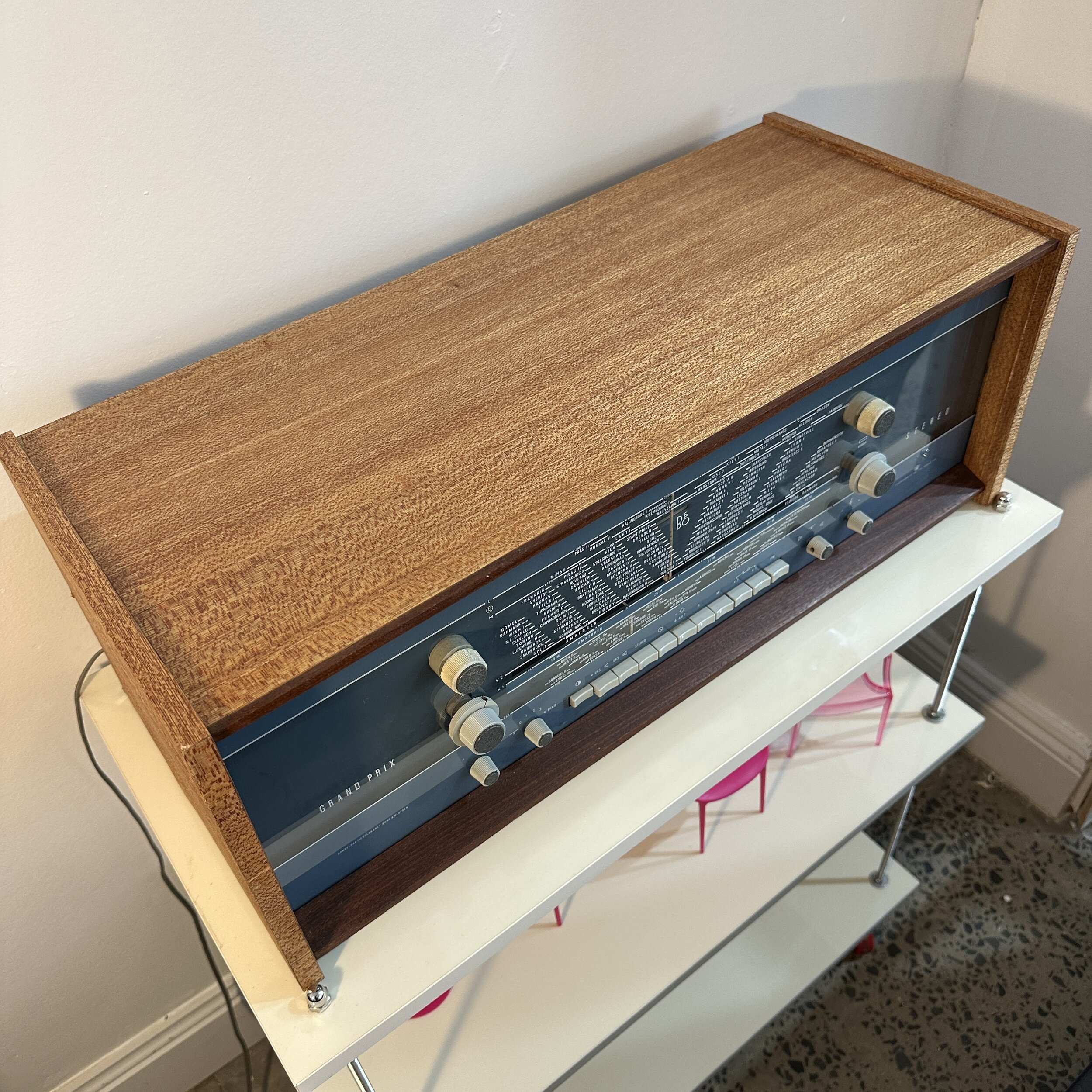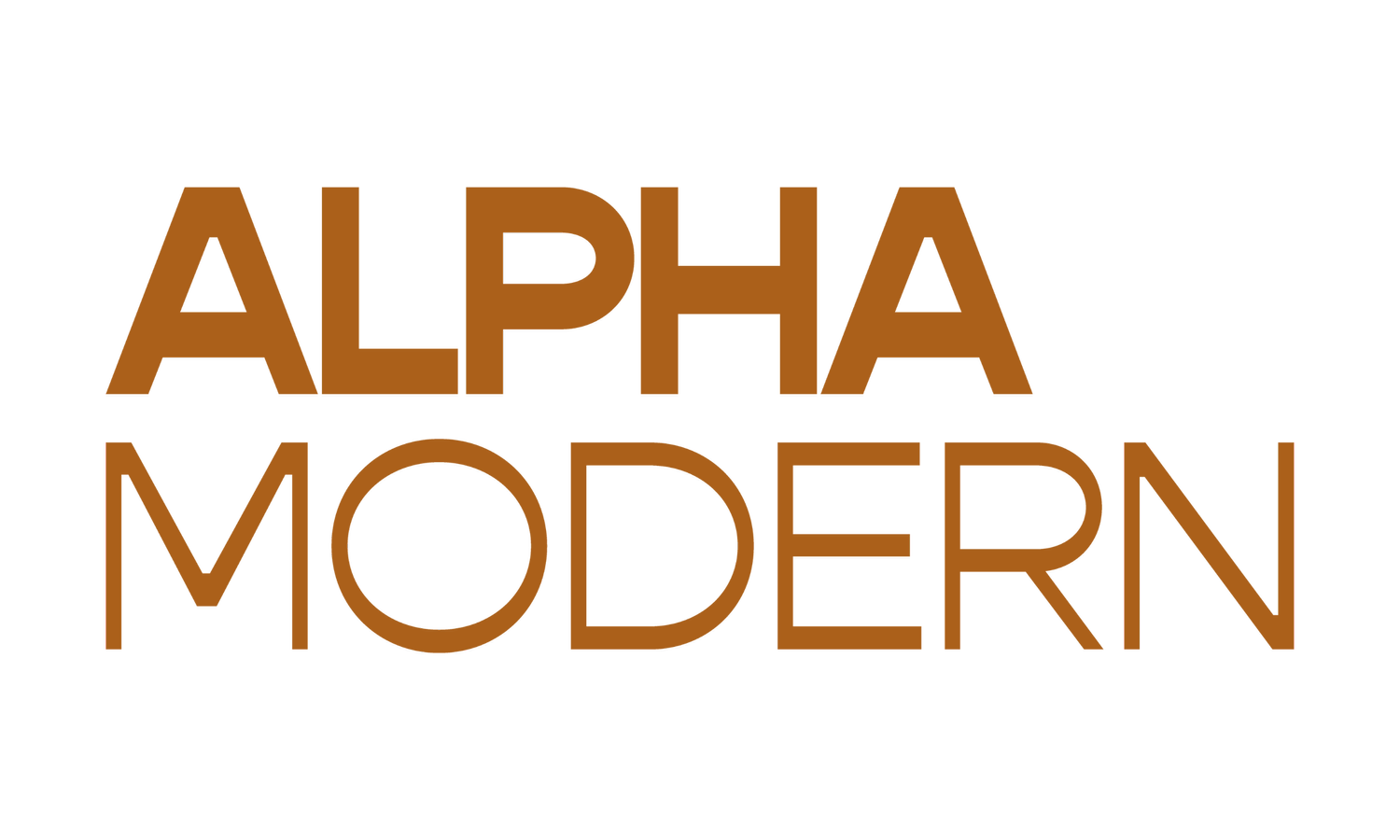 Image 1 of 6
Image 1 of 6

 Image 2 of 6
Image 2 of 6

 Image 3 of 6
Image 3 of 6

 Image 4 of 6
Image 4 of 6

 Image 5 of 6
Image 5 of 6

 Image 6 of 6
Image 6 of 6







1963 BANG & OLUFSEN 'GRAND PRIX MODERNE 609' RADIO AMPLIFIER RECEIVER
A rare and very beautiful 1963 Bang & Olufsen ‘Grand Prix Moderne 609’ radio/amplifier/receiver in restored and working (fully serviced) condition.
The Grand Prix Moderne marked a turning point for B&O with a huge advancement in technology and quality. This piece remarkably features FM radio, not seen in Australia till the mid 1970s.
Dimensions: 640mm x 275mm x 250mm
From the Bang & Olufsen archives:
The Grand Prix 600(608-610) was the largest and most expensive table radio set in the B&O range of the time. It boasted impressive facilities, including a stereo amplifier for the reproduction of stereo records and tapes, a radio section with full coverage of all the wavebands then in use and the option of adding an FM stereo decoder and a delay unit for simulated echo effects. The large cabinet included two built-in aerials, a dipole for FM and a ferrite bar for AM which could be rotated by a control on the front panel. The FM receiver included a powerful amplified automatic frequency control (AFC) circuit that eliminated tuning drift as the set warmed up. During tuning, the AFC could be disabled either by pressing the external antenna button or by pushing the FM tuning knob (separate from the tuning control for AM) inwards slightly. A “magic eye” tuning indicator mounted behind the tuning scale showed the correct point of tune on all wavebands.
The powerful amplifier used four ECL86 valves in two push-pull circuits. An additional valve was used for the tone controls, making the audio sections both complex and comprehensive. Connections were provided for a record player (the 42VF was recommended, a B&O SP series magnetic pickup could not be connected directly) and a tape recorder, both of which could be stereo.
A rare and very beautiful 1963 Bang & Olufsen ‘Grand Prix Moderne 609’ radio/amplifier/receiver in restored and working (fully serviced) condition.
The Grand Prix Moderne marked a turning point for B&O with a huge advancement in technology and quality. This piece remarkably features FM radio, not seen in Australia till the mid 1970s.
Dimensions: 640mm x 275mm x 250mm
From the Bang & Olufsen archives:
The Grand Prix 600(608-610) was the largest and most expensive table radio set in the B&O range of the time. It boasted impressive facilities, including a stereo amplifier for the reproduction of stereo records and tapes, a radio section with full coverage of all the wavebands then in use and the option of adding an FM stereo decoder and a delay unit for simulated echo effects. The large cabinet included two built-in aerials, a dipole for FM and a ferrite bar for AM which could be rotated by a control on the front panel. The FM receiver included a powerful amplified automatic frequency control (AFC) circuit that eliminated tuning drift as the set warmed up. During tuning, the AFC could be disabled either by pressing the external antenna button or by pushing the FM tuning knob (separate from the tuning control for AM) inwards slightly. A “magic eye” tuning indicator mounted behind the tuning scale showed the correct point of tune on all wavebands.
The powerful amplifier used four ECL86 valves in two push-pull circuits. An additional valve was used for the tone controls, making the audio sections both complex and comprehensive. Connections were provided for a record player (the 42VF was recommended, a B&O SP series magnetic pickup could not be connected directly) and a tape recorder, both of which could be stereo.
A rare and very beautiful 1963 Bang & Olufsen ‘Grand Prix Moderne 609’ radio/amplifier/receiver in restored and working (fully serviced) condition.
The Grand Prix Moderne marked a turning point for B&O with a huge advancement in technology and quality. This piece remarkably features FM radio, not seen in Australia till the mid 1970s.
Dimensions: 640mm x 275mm x 250mm
From the Bang & Olufsen archives:
The Grand Prix 600(608-610) was the largest and most expensive table radio set in the B&O range of the time. It boasted impressive facilities, including a stereo amplifier for the reproduction of stereo records and tapes, a radio section with full coverage of all the wavebands then in use and the option of adding an FM stereo decoder and a delay unit for simulated echo effects. The large cabinet included two built-in aerials, a dipole for FM and a ferrite bar for AM which could be rotated by a control on the front panel. The FM receiver included a powerful amplified automatic frequency control (AFC) circuit that eliminated tuning drift as the set warmed up. During tuning, the AFC could be disabled either by pressing the external antenna button or by pushing the FM tuning knob (separate from the tuning control for AM) inwards slightly. A “magic eye” tuning indicator mounted behind the tuning scale showed the correct point of tune on all wavebands.
The powerful amplifier used four ECL86 valves in two push-pull circuits. An additional valve was used for the tone controls, making the audio sections both complex and comprehensive. Connections were provided for a record player (the 42VF was recommended, a B&O SP series magnetic pickup could not be connected directly) and a tape recorder, both of which could be stereo.

